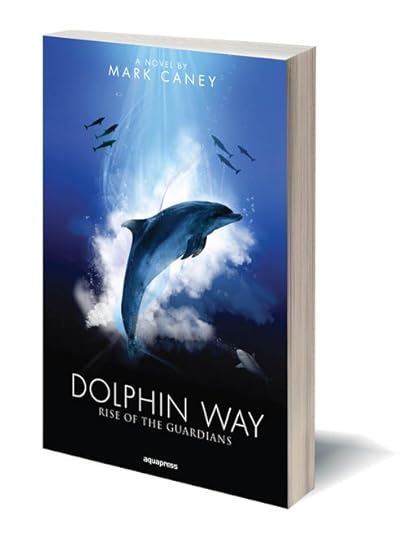Mark Caney's Blog, page 17
March 27, 2015
World’s top zoo organisation accused of links to Taiji dolphin slaughter in Japan
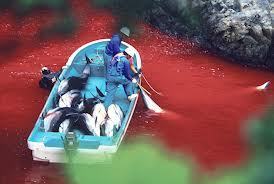 The world’s leading zoo organisation has been accused of being complicit in the infamous dolphin hunts in Taiji, Japan, by helping secure captured dolphins for one of its members, despite publicly condemning the practice.
The world’s leading zoo organisation has been accused of being complicit in the infamous dolphin hunts in Taiji, Japan, by helping secure captured dolphins for one of its members, despite publicly condemning the practice.
The World Association of Zoos and Aquariums (Waza) is being taken to a Swiss court by conservationists who accuse it of misleading conduct over its stance on the Taiji dolphin hunts, which gained global attention through the documentary The Cove.
Waza is accused of sanctioning a private deal involving the fishermen who herd and slaughter the dolphins and the Japanese Association of Zoos and Aquariums (Jaza), which is an associate Waza member.
Waza’s code of ethics labels the dolphin hunts “inherently cruel”, but it allegedly agreed a “dolphin management protocol” with Jaza in 2009 that involved a “gentler” method of herding small numbers of dolphins towards shore where they would be captured for aquariums.
At a meeting in August Waza suggested a two-year moratorium on dolphin drive hunts, but this was rejected by Jaza, Waza said. Instead, Jaza proposed – and Waza allegedly agreed – that during September no dolphins would be killed, but Jaza would get first pick of those that were rounded up, in large numbers if necessary.
After that, three other organisations – Dolphin Resort, Dolphin Base and the Taiji Town Development Public Corporation – could purchase excess animals, with the rest released. Conservationists claim conditions at these aquariums, including the 37 Jaza member aquariums that take dolphins from Taiji, are terrible.
Full story: The Guardian
March 26, 2015
What causes dolphins and whales to strand along the coast?
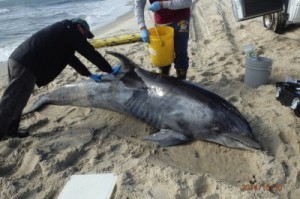 It was not a pretty sight for David Mickey and Sue Dayton the fall day they came upon a large dark object on the beach. Walking closer, they identified what they had spotted as a dead bottlenose dolphin.
It was not a pretty sight for David Mickey and Sue Dayton the fall day they came upon a large dark object on the beach. Walking closer, they identified what they had spotted as a dead bottlenose dolphin.
Disturbed, they called the Marine Mammal Stranding coordinator for North Carolina’s central coast, Vicky Thayer. She came to the island and, with Mickey’s assistance, performed a necropsy on the animal.
Mickey and Dayton had just moved to Ocracoke, and this was their introduction to the series of dolphin strandings in mid-Atlantic waters last year.
Over the next couple of months, two more dolphins would be found stranded on the island.
According to Thayer, the number of strandings varies from year to year, but there was an increase of bottlenose dolphin deaths from July 2013 to June 2014 in North Carolina, USA, due in part to a virus known as dolphin moribillivirus. Of the three dolphins that were stranded on Ocracoke Island last winter, one tested negative for morbillivirus and results from the others are not completed.
The deaths were part of the largest number of strandings of bottlenose dolphins and small whales ever recorded on the East Coast, said William McLellan, state stranding coordinator at the University of North Carolina Wilmington. A similar morbillivirus outbreak took place in 1987-‘88, killing up to half the bottlenose dolphin population in the mid-Atlantic during an eight-month period.
Concerned, Mickey and Dayton helped arrange for Keith Rittmaster, the natural science curator at the North Carolina Maritime Museum in Beaufort, to visit Ocracoke and give a presentation on his work with whales and dolphins. Rittmaster has been involved with many strandings, also known as beachings, that have occurred here over the years.
Entanglement in fishing line, nets and anchors; ingestion of trash, including life jackets and milk jugs; injuries from propeller blades on boats and ships; shark attacks and sting ray barbs; and viruses, bacteria and parasites are among the causes of death in marine mammal strandings described by Rittmaster. He accompanied the descriptions with slide depictions of the many beached whales and dolphins he has studied.
Whales, dolphins and porpoises, known collectively by scientists as “cetaceans,” have intrigued humans for centuries, as evidenced by the nearly full house Rittmaster’s presentation attracted. North Carolina’s coastal waters are home to at least 33 species of marine mammals; and, of the 10 “great” whales that exist, eight have been documented offshore here, according to N.C. Aquariums.
There are toothed whales, known by the scientific name odontoceti, of which the sperm whale is the largest. There are also baleen whales, or mysticeti, including humpback, blue, North Atlantic right, fin, sei and minke whales. Baleen whales are so called because instead of having teeth, they have racks of baleen — hanging sheets of fringed keratin that filter and trap small fish, shrimp, and krill.
Two species of pilot whales, several species of dolphin and one type of porpoise swim off North Carolina’s shores, of which bottlenose dolphins are the most frequently seen. Harbor porpoises and Atlantic spotted dolphins are also abundant.
Two factors play a role in the great diversity of marine mammals off our coast, explained Rittmaster. Warm water of the Gulf Stream, coming from the south, mixes with the colder water of the Labrador Current, streaming from the north, near the N.C. coast. It is also where the inner and outer continental shelves meet, with the same result.
North Carolina’s coastal native people probably took advantage of the beached whales that washed ashore, using their meat and blubber. It was not until the Europeans arrived that the animals were hunted for their blubber that was boiled to extract its oil. This brought several species to the brink of extinction. Oil from the sperm whale was used for lubrication, that from the humpback for lighting and oil from the lower jaw of dolphins for lubrication of fine machinery and watches.
Today cetaceans are protected by the federal Marine Mammal Protection Act and the International Whaling Commission. The most endangered species, the North Atlantic right whale (called so because in former times it was the “right” whale to hunt) appears to be making a slight comeback. This winter 14 right whale calves were born off the Southeast, a number that relieved conservationists who feared there would be fewer.
The National Oceanic and Atmospheric Administration recently proposed expanding the designated critical habitat for the endangered right whales, including a portion of the southern N.C. coast where they have calves and nurse. Overall, the rule would expand their critical habitat to almost 30,000 square nautical miles.
Scientists are worried about the Navy’s sonar testing off the N.C. coast, which they think can adversely affect cetaceans. Thirty-four whales of three different species were stranded and died along the Outer Banks in January 2005 following offshore Navy testing using sonar. While there was no definitive proof that the tests caused the beachings, they were, according to McLellan, “investigated as an acoustic event, and it could not be ruled in or out.” Sonar tests are also, he added, “levels of harassment,” that may contribute to aberrant cetacean behavior.
There are many reason why marine mammals beach themselves, Thayer explained. “People want a simple answer, but it’s not that easy,” she said. “It’s very difficult to determine cause of death and there have not been many cases worldwide that have been definitively attributed to acoustic trauma. Numerous factors can combine to cause marine mammal strandings, although the burden of proof should be on the group causing the potential harm.”
Joel Reynolds, senior attorney for the Natural Resources Defense Council, thinks differently. “There is no question that sonar injures and kills whales and dolphins,” he said in 2008. According to the defense council, sonar can cause bleeding around the brain, ears and other tissues and large bubbles in organs, similar to the bends, which sometimes kills divers who surface too quickly.
The magazine Scientific America writes that sonar sound waves travel hundreds of miles under water and retain intensity of 140 decibels 300 miles from their source. “Evidence shows that whales will swim hundreds of miles, rapidly change their depth, sometimes leading to bleeding from ears and eyes, and beach themselves to get away from the sounds of sonar,” notes an excerpt.
Seismic air guns, which cause similar effects as sonar, are proposed to be used off the N.C. coast, starting this year, to search for potential reservoirs of oil and natural gas. McLellan says that seismic exploration along North Carolina’s coast was conducted last by the National Science Foundation and the Lamont-Doherty Earth Observatory at Columbia University to look at the ocean floor and channels and study continental drift.
Thayer says that efforts are made to insure that cetaceans are beyond a tolerable radius of seismic air gun use, a radius in which air guns are assumed to have the potential of altering cetaceans’ health or natural behavior. But, she explains, marine acoustics and its relation to cetaceans is complex. Beyond having direct physical effects on cetaceans or their behavior, seismic exploration and related activities — boat use, leaks, spills — may have indirect effects by affecting cetaceans’ ability to find and capture food, hear approaching predators and find mates.
Full story: The Outer Banks Voice
March 24, 2015
Dolphin Brains: An Alternative to Complex Intelligence in Primates
March 19, 2015
Documentary details man’s love affair with dolphin
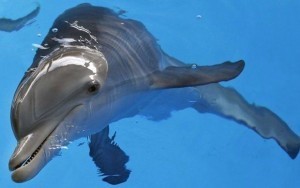 Malcom J. Brenner has gone public with his love affair.
Malcom J. Brenner has gone public with his love affair.
It’s not just any fling — the 63-year-old from Perth Amboy, USA claims to have fallen in love with a dolphin.
“My name is Malcom J. Brenner and this is the story of how I fell in love with Dolly the Dolphin,” he says in a trailer for “Dolphin Lover,” a new, award-winning short documentary.
In 2010, Brenner, who now lives in Florida, wrote “Wet Goddess,” a novel about a college student who falls in love with a captive, bottle-nosed dolphin. “Dolphin Lover,” which is based on the book, premiered earlier this year at Utah’s Slamdance Film Festival.
Filmmakers Kareem Tabsch Joey Daoud decided to make the film after reading the book. Daoud is an award-winning documentarian and film editor.
The 15-minute movie, while riling animal rights advocates, created a buzz at the Slamdance Film Festival.
“Although the film’s editing, animation, sound and archival footage is quite good, I’m glad it’s not longer,” wrote a reviewer for Salt Lake Magazine.
The film received an honorable mention at the festival, which is held in Park City, Utah.
Brenner, who moved from Perth Amboy when he was 9, claims the book and movie are autobiographical. The affair took place in a Florida amusement park in the 1970s.
“When I would get in the water, she would approach me, unafraid,” Brenner says in another trailer. “She would solicit attention.”
In an interview published in Jezebel last month, Brenner attributed his zoophilia to molestation at the hands of a childhood psychiatrist. Still, he compares zoophilia to interracial dating and hopes society will one day become accepting.
Source: NJ.com
March 16, 2015
Drone Captures Pod of Dolphins Surfing Waves
Dave filmed this amazing aerial vision with his quadcopter off Esperance, along south Western Australia’s beautiful coastline. Huge pods of bottlenose dolphins cruise the shoreline and surf the crystal clear turquoise waves.
Such intelligent and playful animals – we have a lot to learn from their lifestyle!!
March 13, 2015
What it takes to rescue a dolphin calf
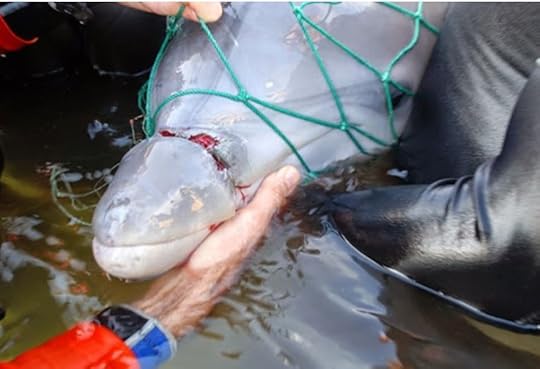 What does it take to help a single dolphin entangled in fishing line?
What does it take to help a single dolphin entangled in fishing line?
In the recent case of a dolphin calf rescued off the eastern coast of Florida, about two days of effort involving seven boats and 35 people from 12 institutions and organizations.
And that was after four weeks spent finding him and evaluating his situation to see whether it warranted intervention.
With spring approaching, marine experts say it’s a good reminder to look after your belongings when you take to the water. From plastic bags to swimming trunks to crab pots, marine life can get entangled in all manner of human debris.
With limited time and resources, experts can’t save them all.
“You really want to make sure you keep all your hands on your stuff,” said Elizabeth Stratton, National Oceanic and Atmospheric Administration Fisheries’ assistant marine mammal stranding coordinator for the southeast region.
“We feel a special responsibility in cases where an animal’s health is in danger because of debris introduced by humans,” said Stratton, who was involved in last week’s rescue.
So where does an intervention begin?
A couple spotted the calf off the coast of Fort Pierce with monofilament line wrapped around his rostrum, or snout. The mammal was riding the wake of their boat. They reported it January 18 to the Harbor Branch Oceanographic Institution, which set out to find the calf and his mother.
The group found the pair and took more pictures, which were sent to the NOAA Fisheries on February 9 for evaluation. The photos revealed monofilament line wrapped around the calf’s upper jaw, cutting into the tissue to the bone, threatening his ability to eat or possibly leading to infection.
Veterinarians who reviewed the photos deemed the injuries potentially life-threatening.
“We can’t disentangle every animal,” Stratton said, “but If it comes back as life-threatening, we mobilize to do disentanglement.”
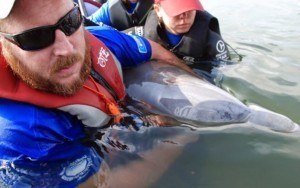 The next step was to find the creatures again. Through characteristics on the mother’s dorsal fin, the group was able to identify her through records on file and target her home range for a search.
The next step was to find the creatures again. Through characteristics on the mother’s dorsal fin, the group was able to identify her through records on file and target her home range for a search.
After a two-day search, the group found the dolphins on Friday and approached for intervention.
The process took about an hour, from netting the calf and his mother to sending them on their way, Stratton said. Apart from the fishing line both mother and son were in good condition.
Rescuers gave the calf a long-lasting antibiotic and radio-tagged the mother before releasing them to the ocean “where they belong,” Stratton said.
The moral of the story for humans: “Be conscious of your gear.”
Source: CNN
Watch WhaleFest Live this Weekend
It’s WhaleFest time again and the big event is happening this weekend, 14/15 March. There’s lots to see and do – check the website for full details.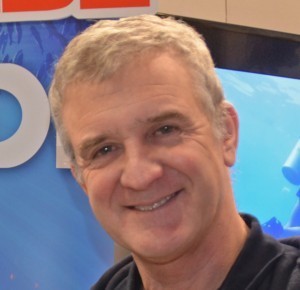
If you can’t make it to Brighton, England, you can even watch WhaleFest Live for free from anywhere in the world at: http://whale-fest.com/live – just allow for the time difference!
Mark Caney, the author of Dolphin Way will be attending WhaleFest on the Saturday.
March 9, 2015
Alleged abusive dolphin trainer found dead in Spain
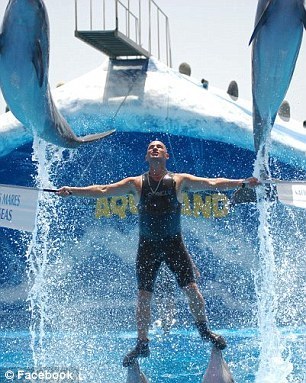 The alleged abusive dolphin trainer the Georgia Aquarium had hoped to hire has been found dead.
The alleged abusive dolphin trainer the Georgia Aquarium had hoped to hire has been found dead.
According to CNN, Jose Luis Barbero was found dead in a car Saturday afternoon in Mallorca, Spain. He had not been heard from since Tuesday. Barbero went missing hours after a new video was released accusing him of abusing dolphins.
Mike Leven, the Chairman & CEO of the Georgia Aquarium released a statement on Barbero’s death:
It was with sadness, outrage and frustration that I received the news this morning that Jose Luis Barbero was found dead in Spain. Initial reports suggest that he allegedly ended his own life. He was a husband, a father and a grandfather who dedicated nearly four decades to caring for animals. We at Georgia Aquarium were proud to have had him serve periodically as a consultant to our organization over the past eight years. His service with us was exemplary.
After allegations were levied against him, we took the situation very seriously. Georgia Aquarium began a search for truth in hopes of disproving these unsubstantiated claims. Sadly, he and his family received death threats, and groups and individuals rushed to judge him. He was not given the right or the privilege to be considered innocent until proven guilty, a principle I hold dear. His death is untimely, unnecessary and unjust.
We were not given the chance to thoughtfully and thoroughly review the allegations against him before activists, consultants and some in our own community tortured him with enough hatred to cause him to allegedly take his own life. I hope the death of Jose Luis Barbero teaches those who were quick to condemn him a lesson about being hasty to charge and indict.
We will continue to operate Georgia Aquarium with dedication, devotion and pride in how we care for and about our animals — as well as the people affiliated with our organization. We will continue to serve the community and be advocates for animals around the world, as we have done since our founding. We will never condone any injustice, such as the one done to Jose Luis Barbero.
We mourn with his family, his friends and all those who must contend with this terrible loss.
In February the first video surfaced allegedly showing employees at Marineland Mallorca mishandling dolphins. On Friday another video was released on YouTube. The animal rights group that posted it says it shows Barbero and other trainers under his direction slapping and kicking the mammals during training sessions.
The Georgia Aquarium had planned to hire Barbero as a new Vice President, but put their decision on hold after the videos were released. It has turned the videos over to forensic consultants to review to verify the legitimacy of them. The aquarium called the first “extremely questionable” and “crudely edited.”
The Georgia Aquarium released a statement on the investigation in Barbero Friday afternoon:
Our search for truth into the allegations against Jose Luis Barbero continues. Until our investigation is complete, we will not make any decisions regarding his employment, so at this time, Mr. Barbero remains in Spain.
We are committed to making decisions based on factual information and very thorough analysis. We have a zero tolerance policy against the mistreatment of animals and continue to investigate every aspect of this matter. We appreciate your patience and support as we sort through this difficult situation.
Full story: 11 Alive
March 5, 2015
Try an Underwater World Book on #WorldBookDay
March 3, 2015
Win a copy of Dolphin Way in free competition
Goodreads Book Giveaway

Dolphin Way
by Mark Caney
Giveaway ends April 01, 2015.
See the giveaway details
at Goodreads.

